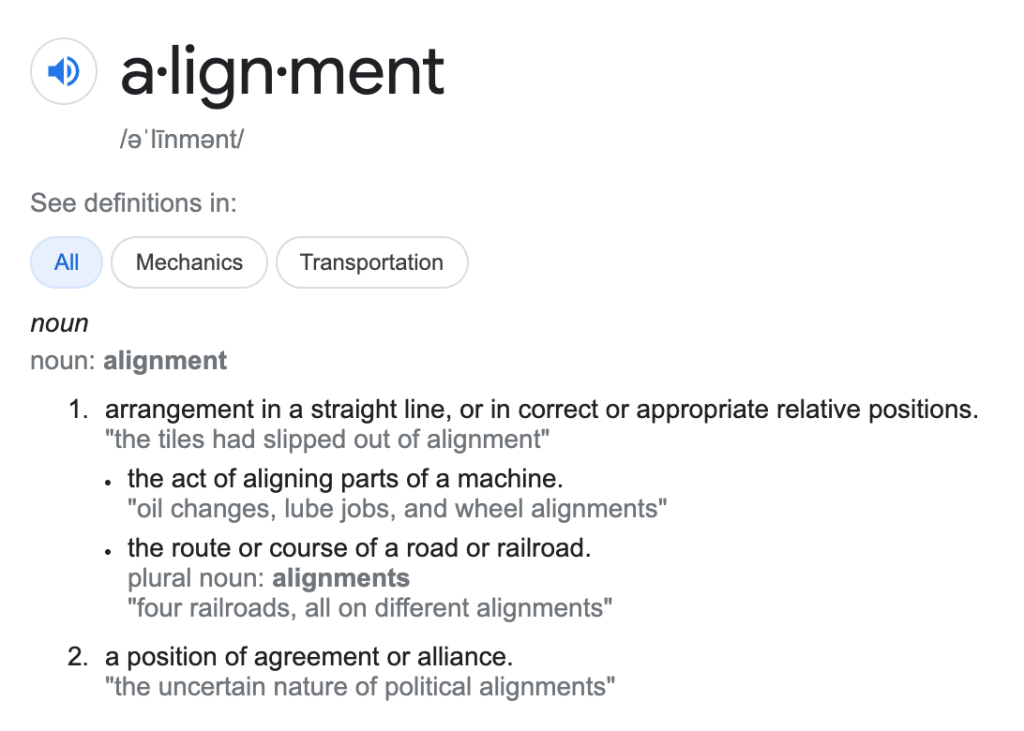
When we read the definition of alignment in the dictionary we get the sense of how it feels to work in a command & control mindset: Cogs in a machine, expected to align in a straight line and travel a predefined course… And most of all to agree.
Alignment in a command & control environment is a top-down “application” management runs to ensure they get their expected output by controlling the direction and actions of their team…
Being value-able
In command & control environments people can derive a sense of progress and value by simply delivering outputs. “We released a new version”… “We just completed our rebranding”… “I’ve been working crazy 18 hours days for the past quarter”…
Empowered teams on the other hand are given a destination (goal) and are trusted to get there. The way an empowered team demonstrates progress is NOT by delivering outputs (features, versions, etc) but rather by delivering VALUE.
Empowering alignment
This is why empowered teams are “dependent” on a clear and aligned definition of value in order to be and feel value-able.
Alignment, for the empowering leader, then becomes a bi-directional interface for value creation. To succeed in empowering environments we need to shift our mindset and stop thinking of “alignment” as a top-down program we run to ensure the predicted output of our teams. Instead, alignment becomes a bi-directional “interface” that enables teams and individuals to:
- request_context
- get_goal
- update_impact
Am I value-able?
The true test of alignment, in an empowering environment, isn’t the level of agreement or the unity in which our team moves in the same direction…
Being aligned in empowered teams means we have a single interface in which the company, the teams, and individuals can answer the question “Are we valuable?”